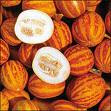Perfect melon growing latitude is 30N to 35TD; Spanish Springs is 39 to 38' 57" N
January - try to buy 75 day varieties
Melons like it hot and bright: sunny days in the eighties, nights in the sixties. Melons Mature 80-120 days after seeding: some watermelons need about a month longer (up to 150) says. None of the melons take kindly to frost, but if you don’t have a decent interval between spring and fall freezes, there are ways to stretch the season.
Soil light, deep and well drained: sandy loam is best. Amend soil in the fall with leaf mold and compost, green manure or cover crop.
September – set up next year’s melon bed. South sloping to promote warmth, small enough to work in without stepping on growing area; protected from N and/or W wind.
Rotate your melons to a new area every year, especially if the soil is infected with nematodes or Fusarium.
Watermelon does well in acidic (ph 5-7); melon prefers basic or alkaline (ph 7-8).
Root systems are large but relatively shallow.
Melons hate soil compaction and water logging. Protect from wind, especially N and/or W, but don’t block out the sun.
Plant after threat of frost has passed and soil temps are at least 60. Four inch transplants should work just fine and produce fruit.
April - Nick and soak watermelon seeds; start 4 inch pots with 4-5 seeds each, 2-4 weeks before Memorial Day (find out when air temps stay above 60 at night -- can I plant three weeks prior to that if transplants covered with Agrobon); keep in a dark moist place until seedlings emerge in about a week at 75-85 degrees. Watermelon can take longer because seeds are tough, scarify and soak first. Once seedlings emerge provide 16 hours under grow lights, keeping them 2-3 inches from the light. Thin to three plants per pot; feed with diluted fish emulsion once or twice a week until they’re ready for the garden.
Six millimeter black polyethylene is helpful.
At planting, mix a shovel full of well-rotted manure into the soil and plant melons in “hills” a grouping of three or four. Sprinkle soil with diatomaceous earth for slugs; use Bt for caterpillars. Cover with Agrobon for 3 weeks until plants are established
Remove any leaves that show signs of disease, cull (prune out) defective fruits to 2-3 per vine; wrap fruits in Agrobon bags to deter cucumber beetle.
Télécharger The Promised Neverland T11 gratuite
4 years ago










